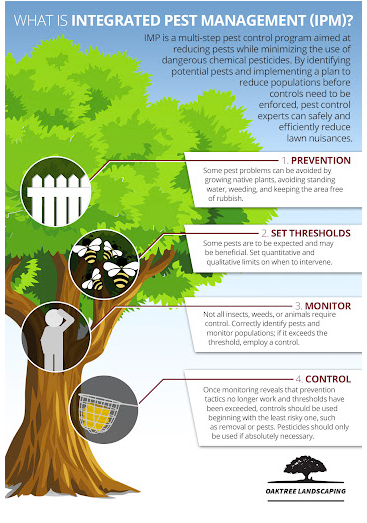Pestwise for Beginners
Table of ContentsPestwise for DummiesThe Best Guide To PestwiseThe Main Principles Of Pestwise What Does Pestwise Mean?Pestwise Fundamentals ExplainedPestwise Fundamentals ExplainedThe Pestwise Ideas

Q. Define "integrated insect management" (IPM) and checklist a number of possible control techniques that may be used in an IPM strategy. A. Integrated bug management is the incorporating of proper insect control tactics right into a single strategy to lower bugs and their damages to an appropriate level. Parasite control techniques may consist of: host resistance, organic control, cultural control, mechanical control, cleanliness, and chemical (pesticide) control.
The Basic Principles Of Pestwise
What can you do to keep the parasites you are attempting to regulate from coming to be resistant to the chemicals you use? A. Bug resistance can be decreased by utilizing integrated insect administration and revolving the sorts of pesticides utilized.
Pests are a crucial risk to the farming company, and incorporated parasite management helps cultivators address and minimize these risks. Integrated bug monitoring uses several approaches in facility, hence being an extra reliable solution to the issue. Pest Control. In particular, eliminating aggressive chemical methods allows for minimizing harm to people and the setting by making use of all-natural and more secure choices instead
What Does Pestwise Mean?
The objective of incorporated bug administration is to reduce this harm and control appropriate problem levels rather than eliminate all undesirable populaces. This is why it is important to recognize what procedures are justified in each situation and use hostile ones only when various other integrated monitoring methods don't function. Integrated management minimizes the unfavorable consequences of a non-IPM strategy, and the primary advantages of IPM Advantages of IPM.
A correct understanding of the invasion scope establishes if the issue should be dealt with. are the following elements of an IPM program due to the fact that it is vital to realize if the microorganisms make possible risks and select the integrated administration alternatives or the details pesticide usage. intend to minimize problems by using different agronomic methods.
Pestwise for Dummies
Integrated management options in an IPM program start with more secure to a lot more aggressive ones. The prior integrated administration aspects assist recognize exactly how to intend and apply an IPM program step by action: Screen your crops routinely.
Among others, IPM social methods include the adhering to field management methods: dirt treatment; option of suitable plants; crop turning; interplanting or strip cropping; selection of planting days; weed control; usage of catch plants. Positive dirt conditions speed up plant growth, and more energetic plants are a lot more resistant to invasions. Healthy and balanced seed startings and seeds predetermine successful crop development, so it is crucial to pick pest-free growing material with strong roots.
Therefore, to name a few applications, crop rotation can be properly used as an incorporated pest administration technique. Vermin spread out slower if rows of various crop types separate their host plants in intercropping or strip chopping, which is additionally made use of in the incorporated parasite monitoring system. Alternatively, infestations enhance when plants of the exact same plant kind or family members expand together.
Potato beetles can harm growing potatoes, in addition to tomatoes. Planting trap plants in patches is another alternative for IPM intercropping. This integrated pest monitoring approach recommends bring in parasites to certain plants and after that controlling them with chemical or mechanical methods. Particularly, you can grow soybeans as catch plants for Japanese beetles.
5 Easy Facts About Pestwise Explained
Obstacles are common instances of physical IPM methods. Fully grown pests or their eggs and larvae are gathered by hand and damaged.

Department of Plant Sciences. College of Missouri. Soil solarization is a reliable incorporated management method to decontaminate the field by heating it in an all-natural means. This integrated administration method indicates a typical means of destroying insects by killers, parasitoids, virus, and other organic control representatives (aka antagonistic organisms). The function of biological control in IPM is to.
Get This Report about Pestwise
With time, their population ended up being an actual nuisance to farmers alongside indigenous kangaroos or dingoes. The walking cane toad is an additional instance showing integrated biological control failure in this regard when it refused to hunt the target varieties and ended up being an insect itself. Parasitoids develop on or within their hosts to ultimately kill them after maturing.